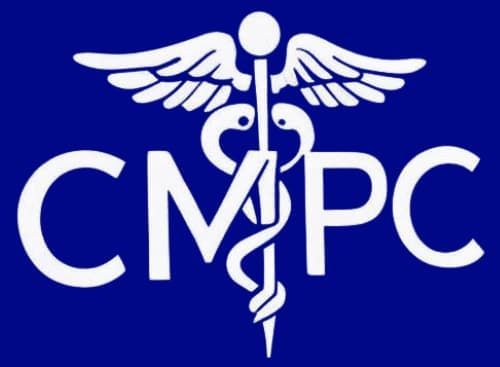
Understanding Your Body Type Made Simple
Our bodies generally fall into three main categories, each responding differently to diet and exercise:
Excessive weight Body (Endomorph)
People who tend to carry weight around their middle gain weight quickly and find weight loss challenging. Think of this body type as naturally designed to store energy efficiently - great for survival in ancient times but challenging in our modern world. Research shows this body type responds best to structured, gradual approaches to weight loss.
Athletic Build (Mesomorph)
Those with a naturally muscular frame find gaining or losing weight relatively easy. Like a well-tuned engine, this body type efficiently converts food into either muscle or energy, making weight management more straightforward with the right approach.
Lean Frame (Ectomorph)
Naturally slim people who might struggle to gain weight. Think of this body type as having a naturally fast metabolism - like a car that burns fuel quickly. While weight loss might seem easier, maintaining muscle mass during weight loss becomes crucial for long-term health.
Making Weight Loss Work for Your Body Type
Food and Eating Patterns for three categories of body weights
1. Excessive Weight Bodies:
- Eat Smaller, Frequent Meals:
Consuming smaller meals throughout the day can help maintain energy levels and prevent overeating during larger meals. This approach also stabilizes blood sugar levels, which can benefit those with excessive weight, as it helps reduce cravings and enhances overall satiety.
- Focus on Protein-Rich Foods:
Prioritizing protein-rich foods, such as lean meats, fish, and eggs, can contribute to muscle maintenance and repair. Protein is also essential for a feeling of fullness, which can aid in weight management. Incorporating a variety of vegetables ensures vital vitamins and minerals, further supporting weight loss efforts.
- Limit Carbohydrates, But Don’t Eliminate:
While it’s essential to reduce the intake of carbohydrates to control calorie consumption, eliminating them can lead to cravings and binge eating. Instead, opt for whole grains like brown rice, quinoa, and whole wheat products, which provide fibre and nutrients, supporting digestion and prolonged energy levels without the pitfalls of processed carbohydrates.
- Timing of Dinner Matters:
Research suggests that eating dinner before 7 PM can positively influence metabolism, particularly for those carrying excessive weight. This practice allows for adequate digestion before sleep, enhancing metabolic processes and overall health. An early dinner gives the body more time to burn calories effectively throughout the night and can help regulate various bodily functions more efficiently.
Implementing these strategies can create a comprehensive approach to managing weight effectively and promoting overall health, particularly for individuals with excessive weight. Consistency is key, as these habits can lead to sustainable changes.
2. Athletic Build Bodies:
A flexible eating schedule can benefit individuals who prefer not to stick to rigid meal timings. It allows for a more personalized approach to nutrition, accommodating various lifestyles, work commitments, and social activities. By having the autonomy to adjust meal times, people are more likely to maintain consistency in their eating habits and prevent feelings of deprivation.
- Balanced meals are pivotal for optimal health, consisting of equal portions of proteins, healthy carbohydrates, and vegetables. Proteins are the building blocks for muscle and tissue repair, while healthy carbs provide energy for daily activities. Additionally, vegetables are essential for supplying vitamins, minerals, and fibre, which support digestion and overall wellness. Incorporating a variety of food groups in each meal ensures that one’s body receives all necessary nutrients, promoting better health and sustained energy levels.
- Occasional planned treats can play a significant role in a healthy eating regimen. When treats are strategically included in one’s diet, they can satisfy cravings without causing the individual to abandon their nutritional goals. This approach supports mental well-being, allowing for enjoyment and indulgence in moderation. By maintaining a balanced perspective on eating, individuals can navigate their dietary journeys without feeling deprived, thus allowing for continued progress.
- Engaging in morning exercise followed by a protein-rich breakfast is an effective strategy for enhancing overall results. Morning workouts kickstart metabolism and increase energy levels for the day ahead. Pairing this exercise with a breakfast rich in proteins aids in muscle recovery but also helps in keeping one satiated for more extended periods. This combination can lead to improved focus, better performance in daily activities, and more successful long-term health outcomes.
3. Lean Frame Bodies:
To effectively prevent muscle loss, it’s essential to incorporate more frequent meals rich in nutrients. This means consuming smaller, well-balanced meals throughout the day rather than relying solely on a few large meals. Doing so gives the body a steady supply of the necessary nutrients to support muscle maintenance and growth, especially during increased physical activity.
- Higher Protein Requirements: As the body undergoes exercise, particularly resistance training, the demand for protein increases. Protein is crucial for repairing and building muscle tissue, and consuming adequate amounts during exercise is particularly important. This helps optimize recovery and supports muscle synthesis. Integrating protein-rich foods, such as lean meats, dairy products, legumes, and plant-based proteins, into meals consumed before and after workouts is advisable.
- Include Healthy Fats: Healthy fats play a vital role in overall health and are essential for hormone production and nutrient absorption. Including sources of healthy fats in the diet, such as avocados, nuts, and olive oil, can aid in sustaining energy levels and increasing the calorie density of meals. This is particularly beneficial for those looking to maintain or gain muscle mass, as it ensures sufficient caloric intake without relying heavily on carbohydrates.
- Post-Exercise Nutrition: Consuming nutrients shortly after exercising, ideally within a 30-minute, is critical for recovery. This post-exercise nutrition should include protein and carbohydrates to replenish glycogen stores and promote muscle repair. Options such as protein shakes, yogurt with fruit, or a balanced meal can provide the necessary nutrients to enhance recovery outcomes and support muscle preservation.
Exercise Recommendations by Body Type
1. Excessive weight body exercise plan
This exercise plan is designed to help individuals with excessive weight engage in physical activities safely and effectively. It focuses on building a strong foundation for fitness through gradual increases in activity levels and various exercise types.
- Walking: Begin with 30 minutes of walking daily. This is a low-impact activity suitable for individuals of all fitness levels. Gradually increase the duration of your walks as your endurance improves. Walking helps burn calories, strengthens the cardiovascular system, and enhances mood.
- Strength training: Once comfortable with walking, incorporate strength training exercises using light weights. Focus on maintaining proper form to prevent injuries and maximize benefits. Strength training helps build muscle mass, which is essential for boosting metabolism and burning fat even at rest. Aim to do this 2-3 times a week.
- Water exercises: Engage in water exercises such as swimming or aqua aerobics. These activities are excellent for those with joint concerns since the buoyancy of water reduces stress on the joints while providing resistance for a good workout. Water exercises can improve overall mobility and cardiovascular fitness without the risk of injury found in weight-bearing activities.
- Activity sessions: Set a goal of 5 to 6 weekly activity sessions. Mixing different types of movements, like a combination of walking, strength training, and water exercises—can help keep the routine exciting and promote overall fitness. Variety in your workout routine not only combats boredom but also helps target different muscle groups and improve overall physical conditioning.
This exercise plan should be approached gradually and consistently for the best results while ensuring safety and enjoyment. Listening to your body and adjusting the intensity and duration of workouts as needed is key to long-term success.
2. Athletic Build Exercise Plan
- Combining cardio and strength training is essential for achieving optimal fitness results. Cardio exercises, such as running, swimming, or cycling, elevate the heart rate and improve cardiovascular health. In contrast, strength training, which includes weight lifting or bodyweight exercises, helps build muscle mass and bone density. Integrating both exercise forms into your routine can enhance overall performance, support weight management, and reduce the risk of injuries.
- High-intensity interval training (HIIT) is an effective method that uses cardio and strength principles. HIIT involves alternating short bursts of intense activity with brief rest periods or lighter activity. This approach boosts cardiovascular fitness and maximizes calorie burn in a shorter time than traditional steady-state exercise.
Moreover, individuals often find they can handle more intense workouts with shorter recovery times due to the adaptive nature of the body. As you train more consistently, your body becomes more efficient at recovering from strenuous exercises. This further allows individuals to increase workout intensity and frequency without the risk of overtraining.
Participation in sports and group activities plays a significant role in maintaining motivation and commitment to fitness goals. Engaging with others adds a social component and fosters a sense of accountability and encouragement. Whether it’s a local basketball league or a group fitness class, these activities can make workouts more enjoyable and less chore, thus promoting long-term adherence to a healthy lifestyle.
3. Lean Frame Exercise Plan
Muscle growth and overall fitness are achievable through a well-rounded approach that includes the following key components:
- Focus on muscle-building exercises with proper rest periods: Prioritizing strength training exercises, such as weight lifting, is essential for stimulating muscle hypertrophy (growth). This involves performing compound movements like squats, deadlifts, and bench presses, which engage multiple muscle groups. Additionally, allowing adequate rest periods - typically 48 hours between intense workouts targeting the same muscle group - facilitates muscle recovery and growth by allowing the muscles to repair the micro-tears during exercise.
- Limit long cardio sessions that might burn too much energy: While cardiovascular exercise is vital for heart health, excessively long sessions can lead to muscle catabolism (the breakdown of muscle tissue) and hinder muscle-building goals. It’s advisable to limit steady-state cardio to shorter sessions while integrating high-intensity interval training (HIIT), which can promote fat loss while preserving muscle mass.
- Include balance and flexibility training: Incorporating balance and flexibility exercises into your routine enhances overall functional fitness. Activities such as yoga, Pilates, or simple stretching can improve posture, reduce the risk of injuries, and increase range of motion. This supports muscle building and contributes to a more well-rounded fitness regimen.
- Recovery between workouts becomes crucial: Recovery is vital to any training plan. Adequate recovery ensures that the body can rebuild and strengthen muscles. This might involve getting enough sleep, hydrating, and consuming a balanced diet rich in protein and essential nutrients that support muscle repair. Moreover, rest days are critical to prevent burnout and overtraining, which can lead to stagnation in progress or even injury.
Seeking medical support
Understanding when to seek medical support can accelerate your success:
1. Non-Surgical Approaches
A. Medication support:
- Helps manage hunger and cravings: Effective strategies and products are available that can aid individuals in controlling their appetite and reducing the intensity of cravings. This management is crucial for those trying to maintain or lose weight, as it can prevent impulsive eating and support healthier dietary choices.
- Different options work better for different body types: It is essential to understand that each person’s body responds differently to various methods of hunger management. Factors such as metabolism, hormonal balance, and personal health history can influence how practical a particular approach may be. Consequently, individuals may need to experiment with several strategies, such as dietary adjustments, supplements, or exercise routines, to find what suits them best.
- Always prescribed and monitored by healthcare providers: Hunger and cravings can be effectively managed through a carefully prepared plan in consultation with health professionals. They can provide personalized recommendations, monitor progress, and make necessary adjustments based on individual health conditions and responses to treatment.
- Combined with lifestyle changes for best results: For sustainable success in managing hunger and cravings, it is essential to integrate these strategies with broader lifestyle changes. This may include adopting a balanced diet, increasing physical activity, improving sleep quality, and managing stress. Such holistic approaches enhance the effectiveness of hunger management plans and contribute to overall well-being.
B. Temporary Devices:
Gastric balloons are a weight loss tool that tends to be particularly effective for heavyweight individuals, characterized by carrying excess weight in the abdominal area. The balloons take up space by being placed in the stomach, creating a feeling of fullness that can help people naturally regulate their portion sizes and reduce overall food intake.
Using a gastric balloon typically lasts from 4 to 6 months. During this time, patients work on adopting healthier eating habits and routines that supplement the physical effects of the balloon. This is a crucial period, as it allows individuals to gradually learn and practice portion control, leading to sustainable weight loss.
One of the key benefits of gastric balloons is that they help form long-lasting habits even after the balloons are removed. The intention is not just to lose weight quickly but to instill a mindset and lifestyle changes that promote healthier eating and prevent weight regain in the future.
2. Surgical Options When Necessary
- Reserved for cases with limited results: This treatment particularly applies to individuals who have tried various health interventions without achieving significant or sustainable improvements. It is a secondary option when other techniques, such as lifestyle modifications, medications, or therapies, fail to provide the desired results.
- Variable success rates: The effectiveness of this treatment can be influenced by several factors, including the individual’s body type and their level of commitment to making lasting lifestyle changes. For instance, those who adopt healthier eating habits, engage in regular physical activity, and maintain a positive mindset may experience better outcomes than those who do not fully commit to lifestyle adjustments.
- Long-term medical follow-up required: It’s essential for patients undergoing this treatment to have consistent medical supervision. Regular follow-ups help monitor progress, manage any potential side effects, and make necessary adjustments to the treatment plan. This sustained oversight ensures patient safety and optimizes results over time.
- Behavioural support enhances effectiveness: Combining treatment with behavioural support systems significantly increases its success rate. Engaging with counsellors, support groups, or health coaches can provide individuals the motivation and tools to navigate their health journeys effectively. The psychosocial aspect is critical in sustaining lifestyle changes and can significantly influence treatment outcomes.
In summary, this treatment approach is tailored for individuals lacking effective alternatives, underscores the importance of personalized commitment to lifestyle improvements, necessitates long-term medical oversight, and advocates for integrating behavioural support to achieve maximum effectiveness.
Keys to Success for Every Body Type
Research shows certain factors improve results regardless of body type:
1. Regular Sleep Patterns
- Aim for 7-9 hours nightly: It’s recommended that adults strive to get between 7 to 9 hours of sleep each night. Sleep is crucial for physical health, mental well-being, and overall functioning. Adequate sleep helps to enhance memory, support learning, and maintain emotional balance. Insufficient sleep can lead to a myriad of health issues, including increased stress, reduced immune function, and impaired cognitive abilities.
- Maintain consistent sleep/wake times: Establishing a regular schedule for sleeping and waking up is vital for regulating your body’s internal clock, or circadian rhythm. Sticking to consistent times helps improve the quality of sleep and makes it easier to fall asleep and wake up. It also reinforces your body’s natural sleep-wake cycle, promoting better overall health.
- Create a relaxing bedtime routine: Calming activities before bed can signal your body that it’s time to wind down. This might include reading a book, taking a warm bath, practicing meditation, or gentle stretching. A relaxing routine can significantly ease the transition to sleep, making you feel more rested and rejuvenated in the morning.
- Avoid screens before bed: Limiting exposure to screens from devices like smartphones, tablets, and TVs at least an hour before bedtime can significantly enhance sleep quality. The blue light emitted from screens can interfere with melatonin production, the hormone responsible for sleep regulation. Instead, consider implementing screen-free time by engaging in calming activities that prepare your mind and body for restful sleep.
2. Stress Management
- Practice regular relaxation techniques: Relaxation techniques such as deep breathing, meditation, or yoga can significantly reduce stress levels. These practices help calm the mind and body, promote mental clarity, and enhance overall well-being. Incorporating relaxation into your daily routine can improve emotional resilience and better-coping mechanisms in challenging situations.
- Find enjoyable physical activities: Identifying and participating in physical activities you enjoy can significantly improve physical and mental health. Whether hiking, dancing, swimming, or playing a sport, engaging in these activities can boost your mood, increase energy levels, and foster a sense of accomplishment. Consistent exercise not only contributes to physical fitness but also stimulates the release of endorphins, known as the body’s natural mood lifters.
- Build a support network: Surrounding yourself with friends, family, or support groups is essential for mental health. A robust support network provides emotional assistance, practical advice, and a sense of belonging. Regularly connecting with others can lessen feelings of isolation and anxiety, as it encourages open communication and sharing of experiences, thereby fostering stronger relationships and emotional strength.
- Consider professional counseling when needed: Seeking help from mental health professionals can be vital in managing emotional or psychological challenges. Professional counselling offers a safe space to explore feelings, develop coping strategies, and work through issues with the guidance of a trained expert. It’s important to recognize when personal struggles become overwhelming and to consider counselling as a proactive approach to enhancing mental health and achieving personal growth.
3. Progress Monitoring
- Take Monthly Measurements Beyond Just Weight: Monitoring more than just your weight when assessing health and fitness progress is essential. Monthly measurements include body measurements (such as waist, hips, and chest), body fat percentage, muscle mass, and even flexibility. This holistic approach helps create a more accurate picture of your overall health and can reveal changes that weight alone might not show.
- Keep a Food and Activity Journal: Documenting what you eat and your daily physical activities can provide insights into your eating habits and lifestyle choices. A food journal can help you identify patterns, such as emotional eating triggers or specific dietary deficiencies. In contrast, an activity log can help you assess whether you’re meeting your fitness goals. Together, they promote accountability and awareness, leading to healthier choices.
- Track Energy Levels and Mood: Monitoring your energy levels and mood can uncover how your diet, exercise, and overall routine affect your mental and physical well-being. Noting fluctuations in mood or energy can help you connect them to specific foods, stressors, or lifestyle choices, allowing you to make informed adjustments for improved wellness.
- Regular Check-Ins with Healthcare Providers: Regular appointments with healthcare professionals (primary care doctors, dietitians, or trainers) are crucial for ongoing health management. These check-ins allow for professional guidance, regular assessments of health progress, and adjustments to your wellness plan based on objective medical data and expert advice. This proactive approach helps prevent potential health issues and ensures you stay on track with your wellness goals.
Making Your Plan Work
Success depends on several factors
- Understanding your body’s natural tendencies: Knowing how your body responds to various stimuli, including exercise, diet, and stress, is essential. You can tailor your fitness and wellness routines by recognizing patterns like energy fluctuations and recovery times. This understanding helps you make informed decisions that align with your unique physiological needs, promoting more effective and personalized progress.
- Creating realistic expectations for progress: Setting achievable goals is crucial for maintaining motivation and reducing frustration. Instead of aiming for drastic changes quickly, focus on minor, incremental improvements. Understand that progress may vary and can be influenced by many factors, including your starting point, lifestyle, and consistency. Realistic expectations will help you stay positive and committed to your journey.
- Building sustainable daily habits: Establishing daily routines that promote health and well-being is vital for long-term success. This includes incorporating physical activity, balanced nutrition, and self-care practices into everyday life. Rather than adopting extreme diets or intense workout regimens that are hard to maintain, focus on creating habits that fit seamlessly into your lifestyle, ensuring you can stick with them over time.
- Celebrating small victories along the way: Recognizing and celebrating your achievements can boost your confidence and motivation, no matter how minor. Acknowledging these milestones can reinforce positive behaviour and remind you of your progress. This could be as simple as rewarding yourself for completing a week of workouts or sticking to your meal plan. Celebrations help maintain a positive mindset and make the journey enjoyable.
- Maintaining regular medical supervision: Regular check-ups with healthcare professionals ensure your health remains a priority as you pursue your goals. This can include routine physical exams, nutritionist consultations, or guidance from fitness experts. Regular supervision helps identify potential issues early on, adjust your plans based on professional insights, and ensure that your approach to health and fitness remains safe and effective.
Effective weight loss isn’t about following someone else’s path but finding what works for your unique body. Scientific studies show that matching weight loss methods to body type increases success rates significantly. Regular consultation with healthcare providers ensures safe progress and timely adjustments to your personalized plan.
As weight management specialists, we understand that each person’s body responds differently to weight loss methods. Let’s explore how your unique body shape and structure influence which approaches work best for you.










